Shrimp keeping - fan shrimp in the aquarium
Shrimp keeping - Fan shrimp
In nature there are several fan shr imp genera, but only a few have made it into the hobby. The most common are the Monster Fan Shrimp (Atya gabonensis), the Moluccan Fan Shrimp (Atyopsis molukkensis) and the Dwarf Fan Shrimp (Atoyida pilipes). Very rarely, the new species Australatya obscura, the Bamboo Shrimp, recently described for the first time, also enters the trade.
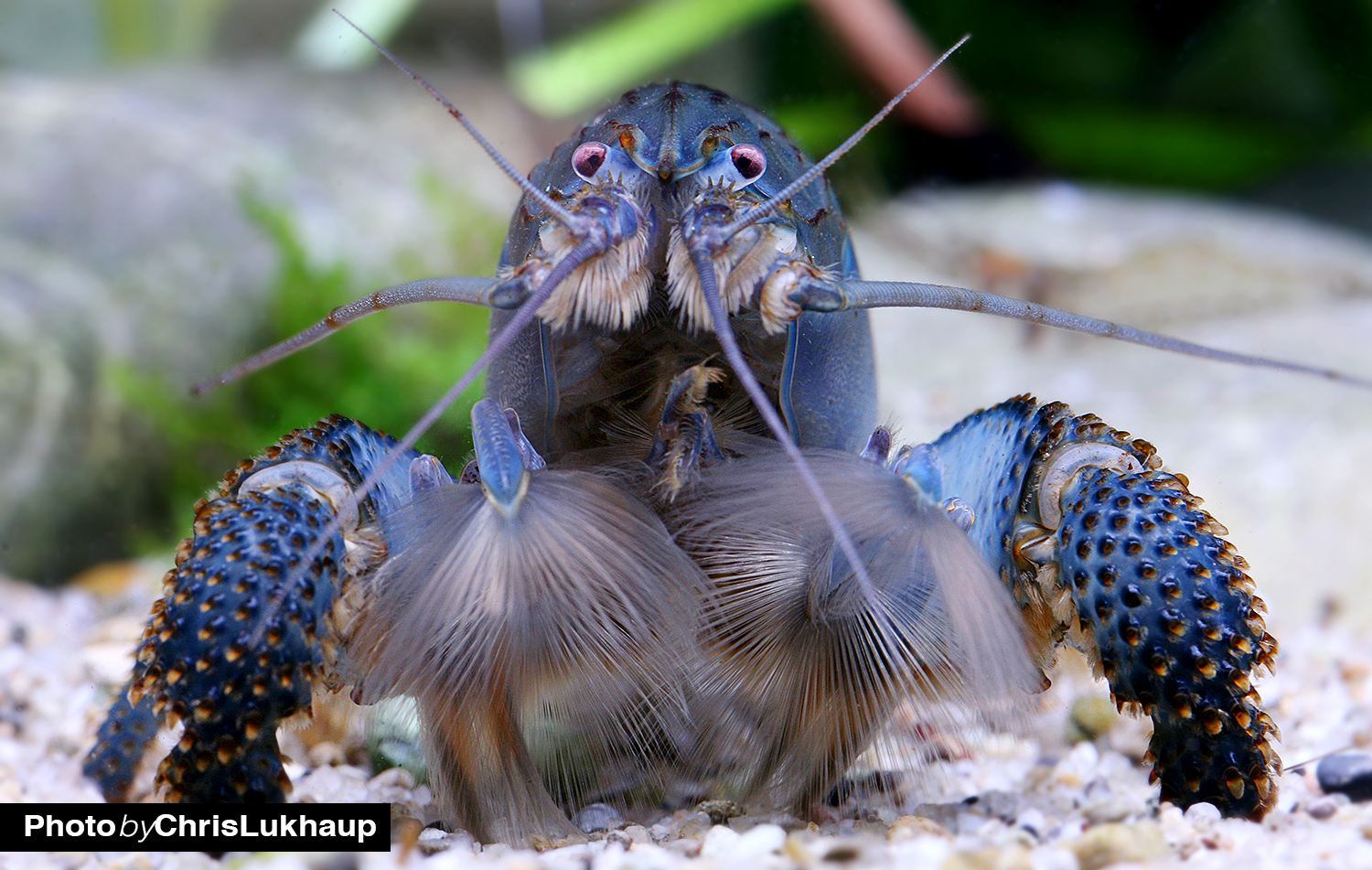 The Gabon Giant Fan Shrimp can grow up to 15 cm if kept well. Fan shrimp have no claws and are despite their size absolutely peaceful aquarium inhabitants.
The Gabon Giant Fan Shrimp can grow up to 15 cm if kept well. Fan shrimp have no claws and are despite their size absolutely peaceful aquarium inhabitants.
Fan shrimp are flow fans
In nature they live in very oxygen-rich water in strong currents, often even in the white-water section of streams. There they cling to stones or driftwood with their heavily spined legs and hold their characteristic fans in the water current. With them they catch small particles and microorganisms floating by. When the fan is full, it is folded up, placed in the mouth and literally sucked off. In the aquarium, fan shrimp also need a strong current. Often the filter pump is not sufficient for this. An additional flow pump is of great advantage.
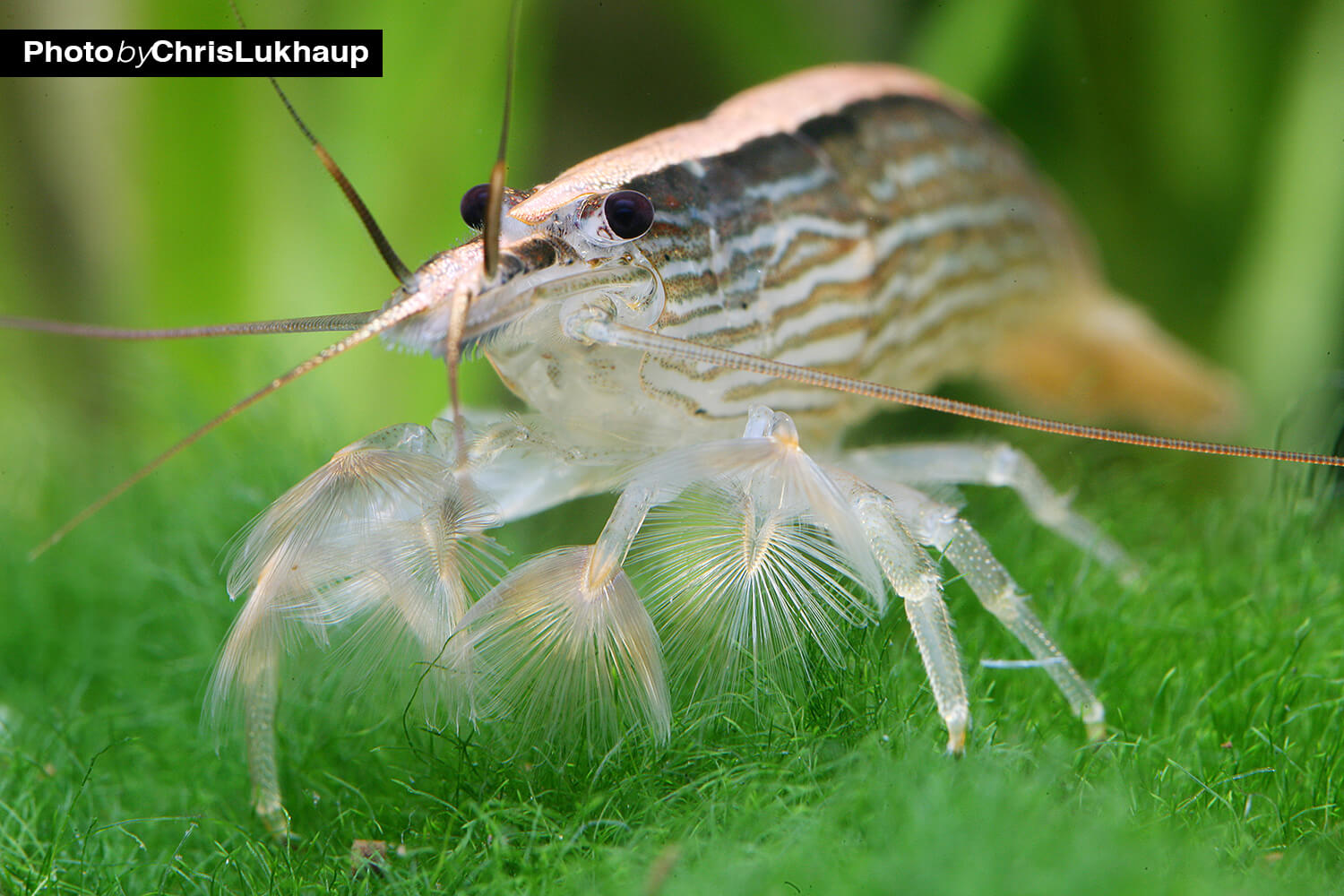 Tip: Put the flow of your pump on a stone or root in the central area of your aquarium. The fan shrimp always prefer the area in the aquarium where there is the most current.
Tip: Put the flow of your pump on a stone or root in the central area of your aquarium. The fan shrimp always prefer the area in the aquarium where there is the most current.
Maintaining fan shrimp in the aquarium
In the aquarium a pH of 6.5 to 8.5, a total hardness (GH) of 6 to 25 °dH and a carbonate hardness (KH) 3 to 15 °dH is optimal. Room temperature is well tolerated. From 25 °C an aerator or an oxidizer should be used to ensure that there is sufficient oxygen in the water. Special fan shrimp food, which does not sink too quickly, and Artemia nauplii are suitable as food. Also fine frozen food is gladly taken. Fan shrimp from the trade sometimes have worn out fans. These animals take food only from the bottom. With the next moult the fans regenerate, then they sit also again in the current.
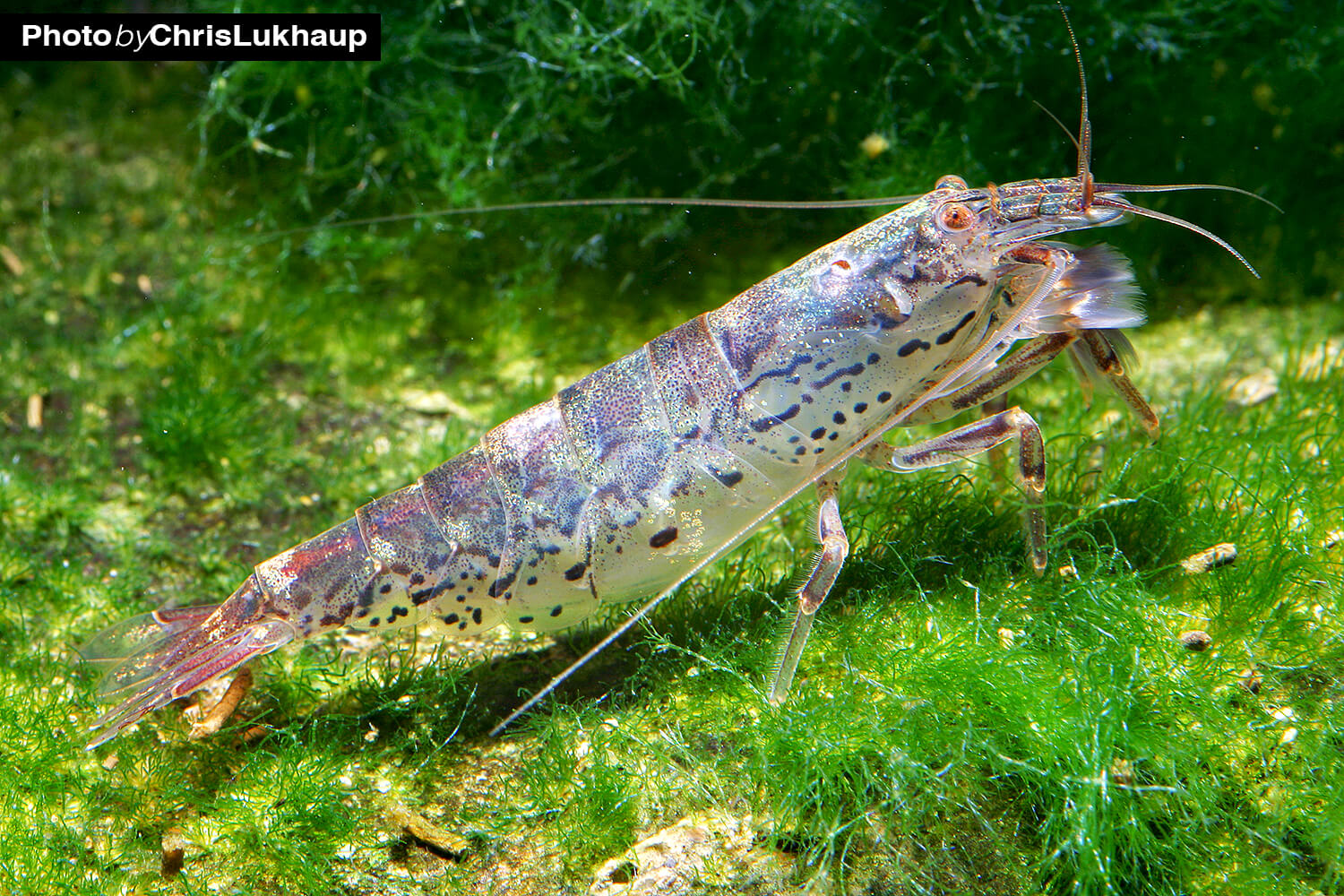 Fan shrimp are much more sensitive to transport than other shrimp species and are sensitive to large temperature fluctuations. They should be transported very carefully in thermoboxes.
Fan shrimp are much more sensitive to transport than other shrimp species and are sensitive to large temperature fluctuations. They should be transported very carefully in thermoboxes.
Socialization & aquarium setup
Fan shrimp are an optimal stocking e.g. for a stream biotope aquarium. They can be well socialized with small current-loving fish such as fin suckers, but also with other filter feeders such as piano snails or Brotia herculea. The optimal fan shrimp aquarium is moderately densely planted. Normally, fan shrimp are rather site-fixated animals, but during mating swims it can get quite busy. The males then need a lot of space, and especially the large representatives are not very elegant swimmers.
It is good to offer the animals many hiding places in the form of caves in the current, especially in the initial phase. With time, especially the smaller species become more confident and trusting and can also be seen during the day. Large predatory fish and crayfish are not suitable co-inhabitants, as the fan shrimp cannot counter them and will be eaten or at least injured.
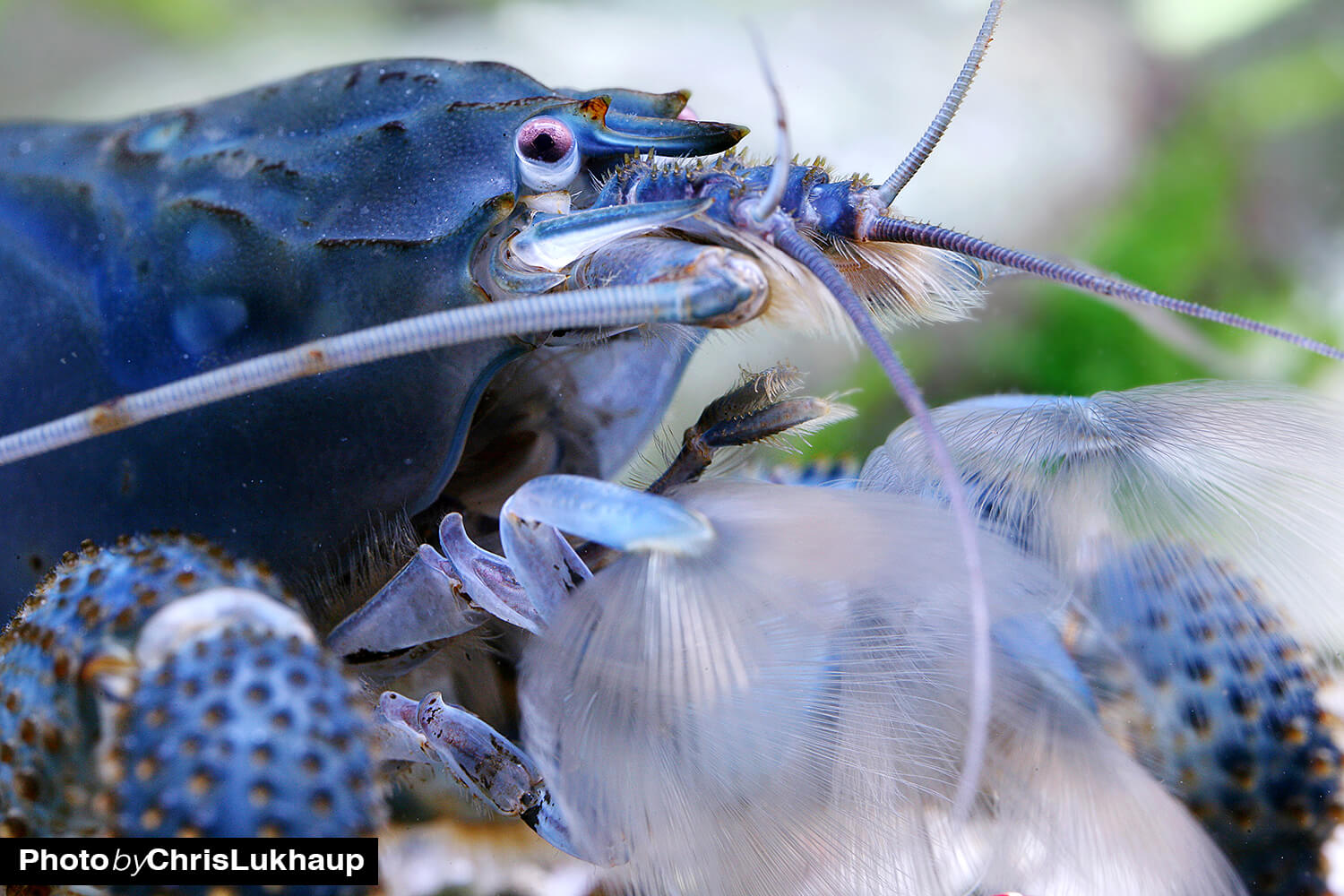 Fan shrimp, like all other shrimp species, absolutely need safe hiding places after molting. Especially in the community aquarium they are at the mercy of other curious aquarium inhabitants.
Fan shrimp, like all other shrimp species, absolutely need safe hiding places after molting. Especially in the community aquarium they are at the mercy of other curious aquarium inhabitants.
Breeding fan shrimp ?
Fan shrimp belong to the primitive type of reproduction. They carry a large number of eggs and release free swimming larvae at the end of the gestation period. In nature, these are drifted with the current into the sea, where they grow and develop into shrimp. Once metamorphosis is complete, the finished small fan shrimp migrate back to freshwater. Due to this reproductive method, the individual species are very widespread, so monster fan shrimp are found not only on the east coast of South America, but also on the west coast of Africa. It is not possible to breed monster fan shrimp in a freshwater aquarium. The larvae must be transferred to a brackish water aquarium and fed with suspended algae and microorganisms. Occasionally the breeding in captivity has already been successful, even if the fan shrimp breeding certainly belongs to the high school of aquaristics.
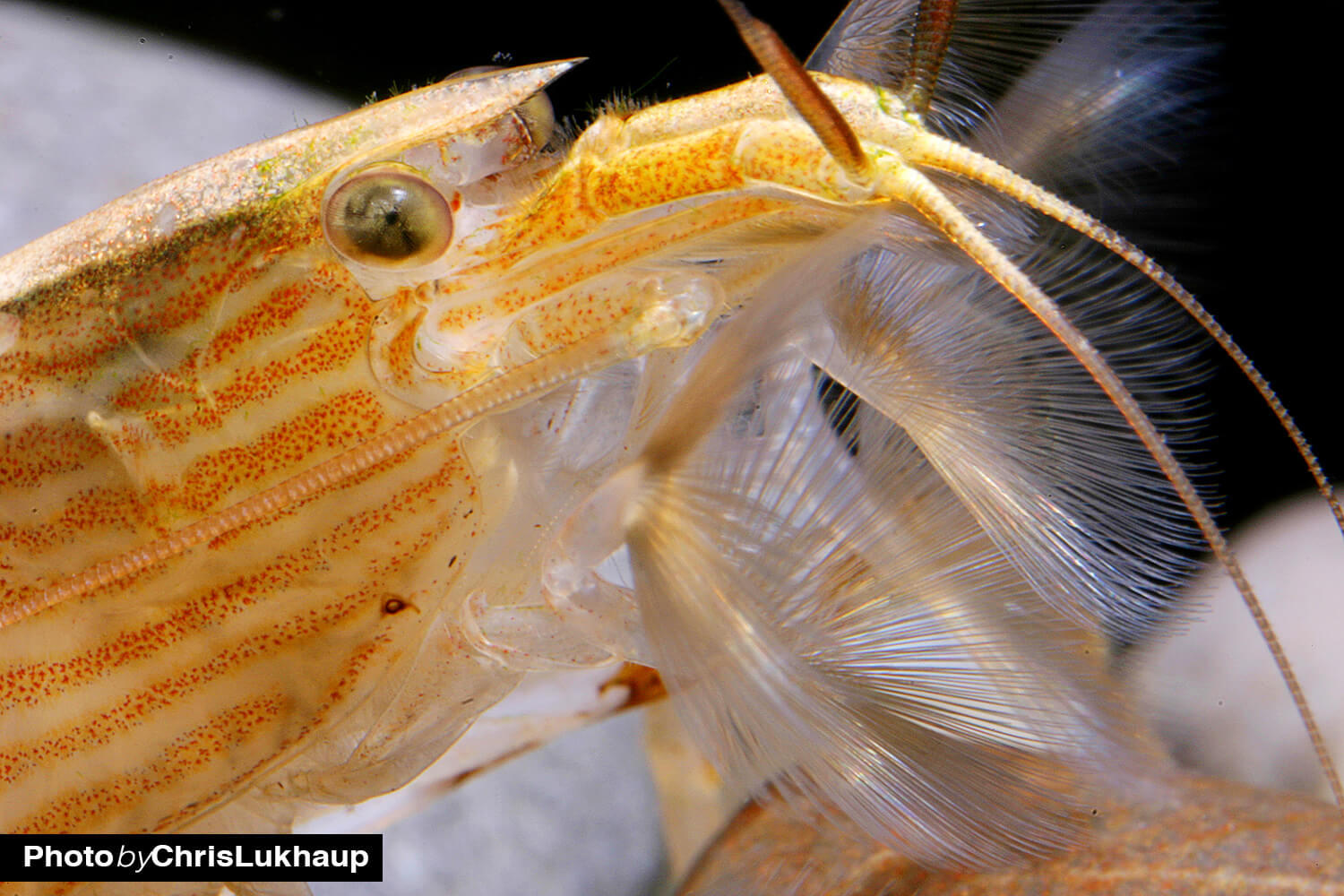 Fanning the whole day costs energy! Stomach examinations with wild living fan shrimps have shown that they eat extremely protein-rich food in nature.
Fanning the whole day costs energy! Stomach examinations with wild living fan shrimps have shown that they eat extremely protein-rich food in nature.
The three most common mistakes in keeping fanshrimp
There are many things you can do wrong with such a highly specialized animal. A beginner shrimp is the fan shrimp only conditionally.
1. Missing current
The most common mistake is certainly that the animals do not get sufficient current. They need a flow pump, the flow generated by the filter is not enough, and the water coming from the filter is too clean anyway and does not contain enough food particles. Especially monster fan shrimp (Atya gabonensis) like to stay in hiding places, so the current should be targeted to them.
2. Lack of food
Another mistake is an unsuitable feeding with too few minerals and too little energy. Due to their way of life, the animals have a high energy consumption, which cannot be covered by flake food alone. Fan shrimp must be fed specifically, what the fish leave is not enough for them. An insufficient supply of minerals leads to moulting problems and fading of the animals. They may even die from the deficiency symptoms.
3. Socialization with overly curious fish
Fan shrimp have no place in a community tank with curious fish. The fish pluck at the fans and damage them, so that the fan shrimp can no longer fan. In addition, they become very shy due to this harassment and then do not show themselves at all.

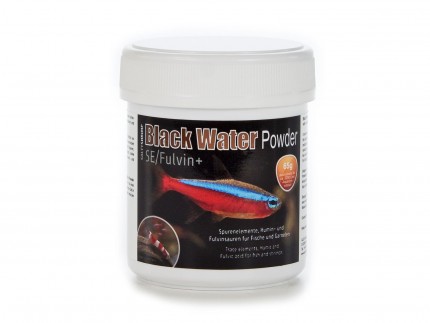
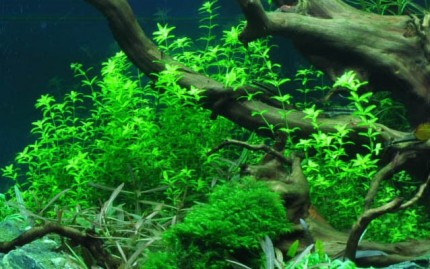
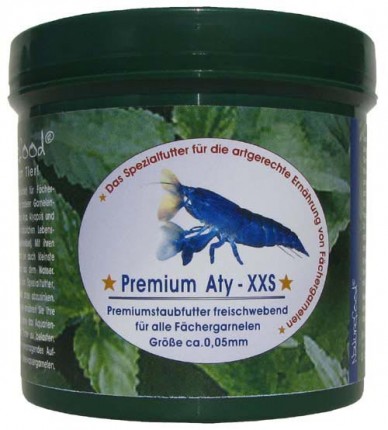
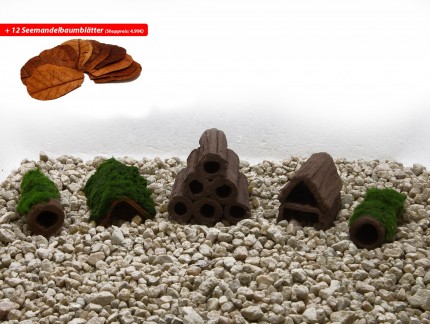
Genial
Vielen dank für den tollen Bericht!